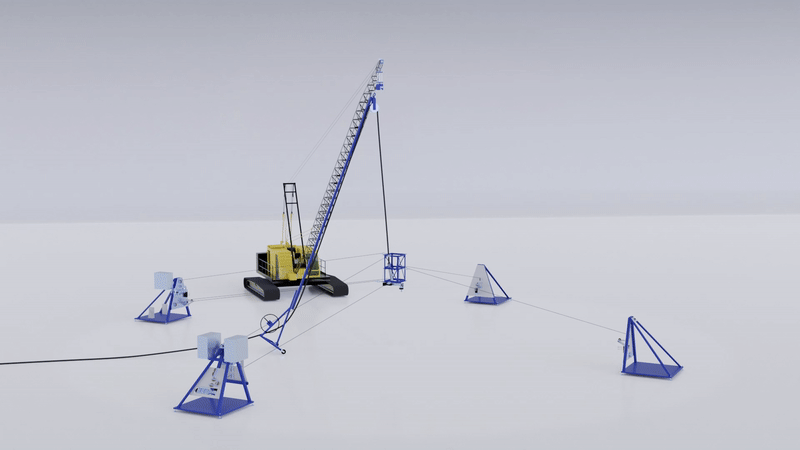Researchers from the Oak Ridge National Laboratory have 3D printed a “first-of-its-kind” smart wall called ‘EMPOWER’. The prototype wall was demonstrated at the Department of Energy’s Federal Energy Management Program’s (FEMP) virtual 2020 Energy Exchange event.
Built to highlight the technology’s capabilities and designed for indoor use, EMPOWER combines concrete additive manufacturing and integrated electronics to serve as a room’s cooling system. The scientists behind the project claim it can reduce energy use, decrease energy demand at peak times, and utilize renewable energy all while keeping a room at constant temperature.
Melissa Lapsa, 2020 Energy Exchange director and FEMP program manager, states: “EMPOWER realizes the power of possibilities, showcasing FEMP’s ability to work with national labs to deliver tangible energy efficient solutions.”
3D printing the smart wall
EMPOWER stands just five feet wide and eight feet tall, and was printed using the SkyBAAM concrete 3D printer – a low cost, cable driven machine. It can be deployed at any construction site and is reportedly highly adaptable.
Brian Post, a manufacturing researcher at Oak Ridge, explains: “What makes SkyBAAM unique is that it eliminates the need for a gantry system commonly found in large-scale additive manufacturing systems. It can be set up within hours at a construction site with minimal site preparation.”

How does EMPOWER work?
Found within the wall is a thermal storage and insulation system, along with an active chiller that acts as a refrigerator. Pipes that are embedded in the wall carry chilled water over its surface area, decreasing the temperature of the 3D printed concrete inside the wall. The insulation levels can be varied dynamically, meaning the internal coolness of the wall can be transferred to the occupied space inside the room at will.
The smart wall, truly earning its tag here, utilizes an intelligent control method to decide how and when to modify the insulation levels. It does this in a predictive manner, taking into consideration the weather and the user’s past behaviour. If the home already has a separate HVAC system in place, it can also communicate with that system to turn the heating on or off so as to not waste energy.

The chiller and pumps in the wall are powered by a smart inverter, which is connected to an external battery. Using the building’s main power grid during times of low electricity demand, the battery can be charged for later use. The researchers intend to eventually power the battery with a renewable source, omitting the inverter’s dependency on the main grid altogether.
While EMPOWER is still in the prototyping phase, Oak Ridge will be collaborating with FEMP to produce, test, and validate the wall for next year’s Energy Exchange event. The concept will be fully validated when two additional EMPOWER walls are built for use in office buildings sometime in 2021.

3D concrete printing isn’t seen very often out of a laboratory setting, but it’s starting to make its way into more commercial applications. U.S.-based concrete specialists QUIKRETE and Contour Crafting Corporation recently announced a collaboration to develop a proprietary concrete to be used with Contour’s concrete 3D printing technology. The partners will go on to print residential, commercial, industrial, and government buildings around the U.S. to combat homelessness.
Elsewhere, Texas-based construction firm ICON recently partnered with the U.S. government-backed Defense Innovation Unit to 3D print military structures at the Camp Pendleton Marine base. ICON initially trained eight Marines to use its concrete 3D printers, who went on to print an entire vehicle hide structure in just 36 hours.
The 4th annual 3D Printing Industry Awards are coming up in November 2020 and we need a trophy. To be in with a chance of winning a brand new Craftbot Flow IDEX XL 3D printer, enter the MyMiniFactory trophy design competition here. We’re happy to accept submissions until the 30th of September 2020.
Subscribe to the 3D Printing Industry newsletter for the latest news in additive manufacturing. You can also stay connected by following us on Twitter and liking us on Facebook.
Looking for a career in additive manufacturing? Visit 3D Printing Jobs for a selection of roles in the industry.
Featured image shows the 3D printed EMPOWER wall in an office space. Image via ORNL.



